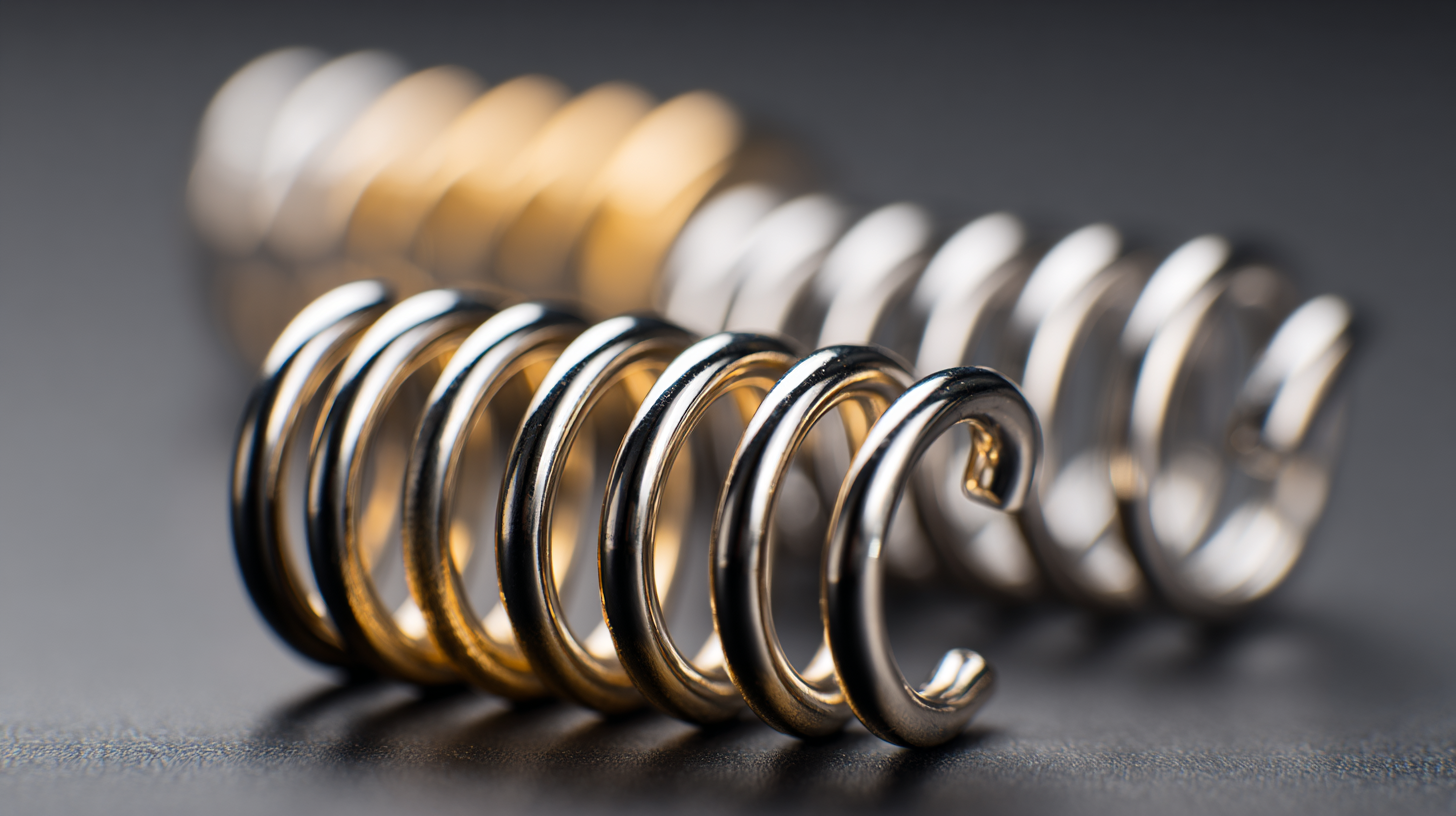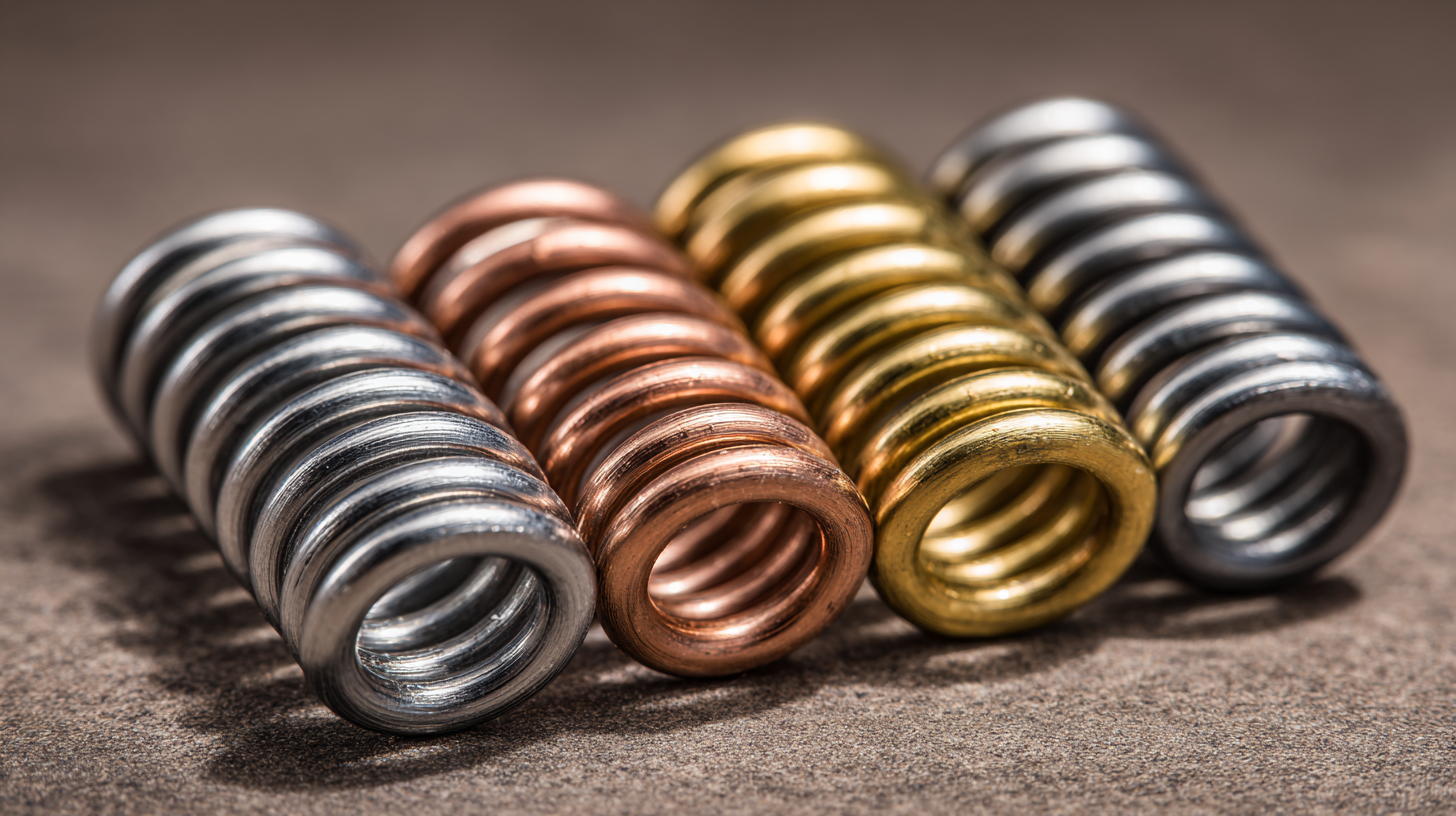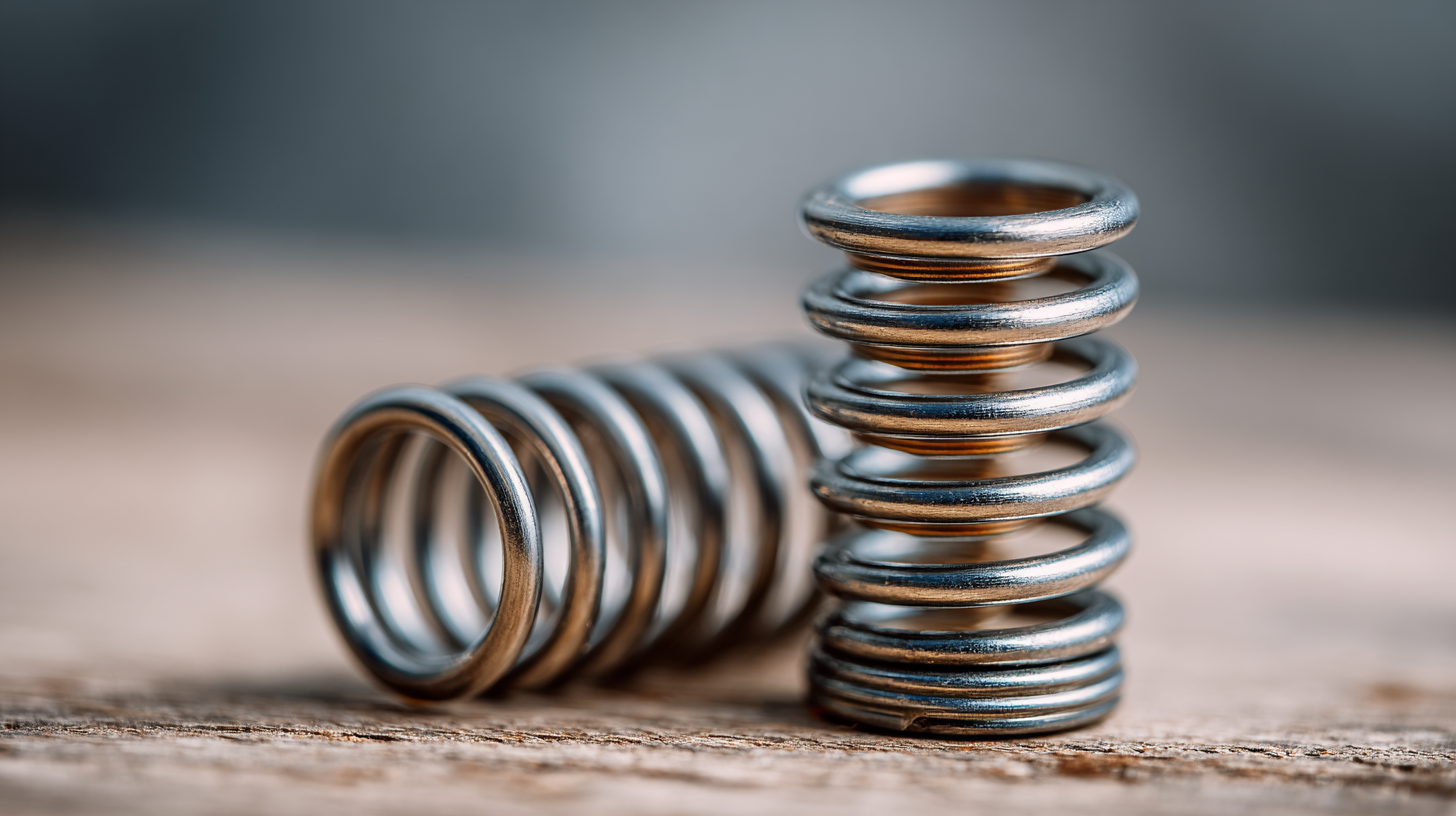Leave Your Message
In today's competitive manufacturing landscape, maximizing the performance of contact springs has emerged as a critical factor for ensuring product reliability and efficiency. According to a recent industry report by Research and Markets, the global market for contact springs is projected to grow at a CAGR of 5.2% between 2023 and 2028, driven by their fundamental role in numerous applications ranging from automotive to electronic devices. Companies that strategically optimize their use of contact springs not only enhance operational efficiency but also significantly reduce costs associated with maintenance and downtime. This blog will explore top strategies for maximizing performance with contact springs, offering insights and tips that can help professionals leverage these essential components to achieve superior results in their respective industries.

 Contact springs are essential components in various applications, providing the necessary force and flexibility to ensure optimal performance. Understanding the different types of contact springs is crucial for selecting the right one for your specific needs. The most common types include compression springs, extension springs, and torsion springs, each serving distinct functions.
Compression springs are designed to resist compressive forces, making them ideal for applications like automotive suspensions or electronic devices. Extension springs, on the other hand, work by resisting lengthening forces and are typically used in mechanisms that require pulling motion. Torsion springs store energy by twisting and are often found in applications like garage doors and clothespins.
Contact springs are essential components in various applications, providing the necessary force and flexibility to ensure optimal performance. Understanding the different types of contact springs is crucial for selecting the right one for your specific needs. The most common types include compression springs, extension springs, and torsion springs, each serving distinct functions.
Compression springs are designed to resist compressive forces, making them ideal for applications like automotive suspensions or electronic devices. Extension springs, on the other hand, work by resisting lengthening forces and are typically used in mechanisms that require pulling motion. Torsion springs store energy by twisting and are often found in applications like garage doors and clothespins.
Choosing the appropriate contact spring involves not only understanding their types but also their specific applications. For optimal performance, one must consider factors such as load requirements, space constraints, and material properties. High-quality materials like stainless steel or music wire enhance durability and performance, especially in high-cycle environments. Additionally, understanding the environment in which the spring will operate—such as temperature variations or exposure to corrosive elements—helps in making informed decisions. By carefully analyzing these aspects, businesses can maximize the longevity and efficiency of their systems through the proper use of contact springs.
The efficiency of contact springs is influenced by several key factors that vary across different industries. One of the most critical aspects is the material used in manufacturing these springs. High-quality materials, such as stainless steel or specialized alloys, provide superior mechanical properties that enhance durability and performance. In industries like automotive and aerospace, where reliability is paramount, the choice of material can significantly affect the lifespan and efficiency of the contact springs under various load conditions.
Another crucial element is the design of the contact springs themselves. Parameters such as the spring rate, geometry, and surface finish can dramatically alter their response to loads and stresses. For example, a well-optimized design that accounts for specific application requirements can help minimize fatigue and improve energy storage capacity. Additionally, understanding the operating environment, including temperature fluctuations and exposure to chemicals, is vital in selecting the right spring configuration to ensure optimal performance. This attention to detail in both material selection and design can lead to significant performance improvements across various applications.
 When it comes to maximizing the performance of contact springs,
focusing on their durability and lifespan is essential. Innovative techniques can significantly enhance these attributes,
ensuring that springs operate effectively for extended periods. One effective strategy is employing advanced materials
that are engineered to withstand high stress and temperature variations, reducing the risk of fatigue and failure.
When it comes to maximizing the performance of contact springs,
focusing on their durability and lifespan is essential. Innovative techniques can significantly enhance these attributes,
ensuring that springs operate effectively for extended periods. One effective strategy is employing advanced materials
that are engineered to withstand high stress and temperature variations, reducing the risk of fatigue and failure.
Another key approach is regular maintenance and inspection. Ensuring that contact springs are free from contaminants and performing checks on their operational environment can prevent premature wear. Applying lubricants specifically designed for contact springs can also reduce friction and heat buildup, contributing to a longer lifespan.
Finally, it’s important to consider the design and configuration of the springs. Using proper dimensions and adjusting the coil shape can lead to improved load distribution and reduced stress concentration. By actively implementing these strategies, manufacturers and users can maximize the efficiency of contact springs, resulting in improved overall performance.
When it comes to maximizing the effectiveness of contact springs, proper installation and maintenance are crucial. Best practices start with thorough planning: assessing the specific requirements of the application and ensuring that the spring selection aligns with the mechanical design and operational parameters. This involves understanding load conditions, environmental factors, and desired life cycles.
Implementation of precise installation techniques, such as using the appropriate tools and maintaining correct alignment, ensures the springs function optimally and reduces wear and tear.
In addition to installation, routine maintenance plays a significant role in performance optimization.
Regular inspections for signs of fatigue or damage can help identify potential issues before they lead to failure. Keeping contact springs clean and free of debris is essential, as contaminants can impair their functionality.
Emphasizing cost minimization and efficiency, organizations can achieve enhanced performance, echoing broader initiatives seen in industries striving for sustainable practices.
By adopting these best practices, businesses can enhance the longevity and effectiveness of contact springs, ultimately contributing to overall operational success.
In today's competitive landscape, understanding the differences between traditional and advanced contact spring solutions is crucial for optimizing performance in various applications. Traditional contact springs, often made from conventional materials, provide reliable yet limited performance metrics. They tend to exhibit predictable characteristics, which can be advantageous in certain settings but may fall short in high-demand environments. Factors such as reduced fatigue resistance and lower reliability during thermal fluctuations can hinder their effectiveness, especially in precision-driven applications.
On the other hand, advanced contact spring solutions employ innovative materials and design techniques that greatly enhance performance. These modern alternatives are designed to withstand harsher conditions and offer superior elasticity, fatigue resistance, and temperature stability. By incorporating materials like specialized alloys or composites, advanced contact springs can significantly reduce the risks of failure and extend the lifespan of components. This comparative analysis highlights the importance of selecting the appropriate contact spring; utilizing advanced solutions can lead to improved operational efficiency and, ultimately, greater overall performance in various industrial and technological contexts.
| Aspect | Traditional Contact Springs | Advanced Contact Springs | Impact on Performance |
|---|---|---|---|
| Material Used | Carbon Steel | Alloy Steel and Composites | Higher durability and performance under stress |
| Cost | Lower initial cost | Higher initial investment | Long-term cost savings due to longevity |
| Load Capacity | Moderate load capacity | High load capacity | Enhanced performance in demanding applications |
| Fatigue Resistance | Standard fatigue resistance | Superior fatigue resistance | Improved lifespan and reliability |
| Temperature Range | Limited temperature range | Wide temperature range | Versatile in extreme conditions |
